written by Josh Beaird
The annual Allinial Global Financial Institutions Forum took place July 30-31. The Whitlock Company is a member firm of Allinial Global, an association of independent professional service accounting firms. This network provides members access to specialized knowledge and expertise that exists throughout the 100 participating firms. The Financial Institutions Forum gathers annually for member firms with financial institution practices to learn about emerging trends in the industry, with specific emphasis on community banks. We covered many areas including the current state of the industry, regulation, technology, and accounting guidance.
State of the Industry
The conference started with Joe Brannen, President of the Georgia Banker’s Association, presenting on the state of the industry. What the numbers show in 2015 is similar to what has occurred the past few years; slow and steady growth in bank earnings, industry assets, and capital levels. This has all led to a decline in FDIC Problem banks, back in line with historical trends.
Mr. Brannen also discussed the long period of consolidation that has occurred in the banking industry since the early nineties. Many community banks must have the discussion to buy, sell, or hold. The table below outlines the 3 options:
| Hold | Be a true community bank (opportunities presented below) |
| Buy | Get into new markets for growth, supplement existing footprint, gain operational and regulatory efficiency |
| Sell | Can get a good deal, there’s a good fit financially and culturally, operational, and regulatory efficiency, issues with succession planning, board and management fatigue |
This also coincides with a De Novo draught, as a low rate environment and high regulatory burden stifle new bank formation.
For those who choose to be a true community bank, there are opportunities in this challenging environment. Below is a summary of areas where community banks can excel:
[table id=1 /]
Regulatory Panel
The next session included a discussion with examiners from the Federal Reserve, FDIC, and OCC. Some current areas of regulatory focus include:
- Real Estate Valuations – Examiners are most concerned with the market value of property, defined by the FDIC as the amount the property would likely sell for, as of the date of value, after a reasonable exposure period in the open market. Appraisals typically determine fair value, which is a financial reporting term. When fair value of property is determined using an appraisal, especially when used in evaluating impaired loans, there are some important questions for management to consider in evaluating the property’s value.
- Were the assumptions used in developing the fair value estimate reasonable?
- Have market conditions or property use changed subsequent to the effective date of the appraisal?
- Should the fair value estimate be adjusted based on these factor
- Other Real Estate Sales – As banks are able to move other real estate owned off of their balance sheet, examiners are concerned about the timing and recording of when the sale actually occurred.
- A sale is not considered consummated until all of the following are met:
- Parties are bound by the terms of the contract
- All consideration has been exchanged
- Any permanent financing for which the seller is responsible has been arranged
- All conditions precedent to closing have been performed
Technology
Banking is rapidly changing due to technology with mobile apps, remote deposit, vendor outsourcing, and “bring your own device”(BYOD) policies. Therefore, we spent a session learning from Jeff Olejnik, Director at Wipfli, a fellow PKF firm, about technology threats to community banks. The biggest threats come from access points where people are involved and most often the access point is malicious email. Some threats that can be spread through email links are:
- Account hijacking – email link contains malware with credential stealing software and hacker can use banking credentials to access victim accounts
- Email Hijacking/Phishing – email link contains malware that uses a legitimate email to spread a virus to other users
- Ransomware – email link contains malware that encrypts all user files, spreads to other users, and ransom is demanded to unlock files
The key is to remember cyber incidents will happen and a quick response can make all the difference. Jeff stressed that Cyber Security should be part of a larger Information Security program, so that all information is protected, regardless of where it resides. The NIST Cybersecurity Framework provides a good starting point for protecting information:
- Identify – An understanding of how to manage cybersecurity risk to systems, assets, data, and capabilities
- Protect – The controls and safeguards to protect or deter cybersecurity threats
- Detect – Continuous monitoring to provide proactive real-time alerts to cybersecurity related events
- Respond – Incident response activities
- Recover – Business continuity plans to maintain resilience and recover capabilities after a data breach
Accounting
Finally, we had an update on accounting standards, specifically those affecting community banks. It was a slow year for FASB and the biggest upcoming change will be the adoption of the “Current Expected Credit Loss” (CECL) model in the calculation of the Allowance for Loan Loss. I wrote last year that the standard would be adopted by the end of 2014; however, it still has not happened. It may happen by 2016 and we will publish further information at that time. Data to start collecting in anticipation of the new standard is listed below:
- Underwriting data for paid off loans
- Charge off data on individual loans (collateral type, amount, and date)
- Transition of loans through past due statuses
- Transition of loans through risk rating statuses
Reviewing this data in prior years back as far as 2011 could also be helpful to have an understanding of the losses on seasoned portfolios. This information will be helpful as a starting point for determining “future losses” in the new model.
If you have any questions about the areas discussed in this article, please contact us 417-881-0145.

